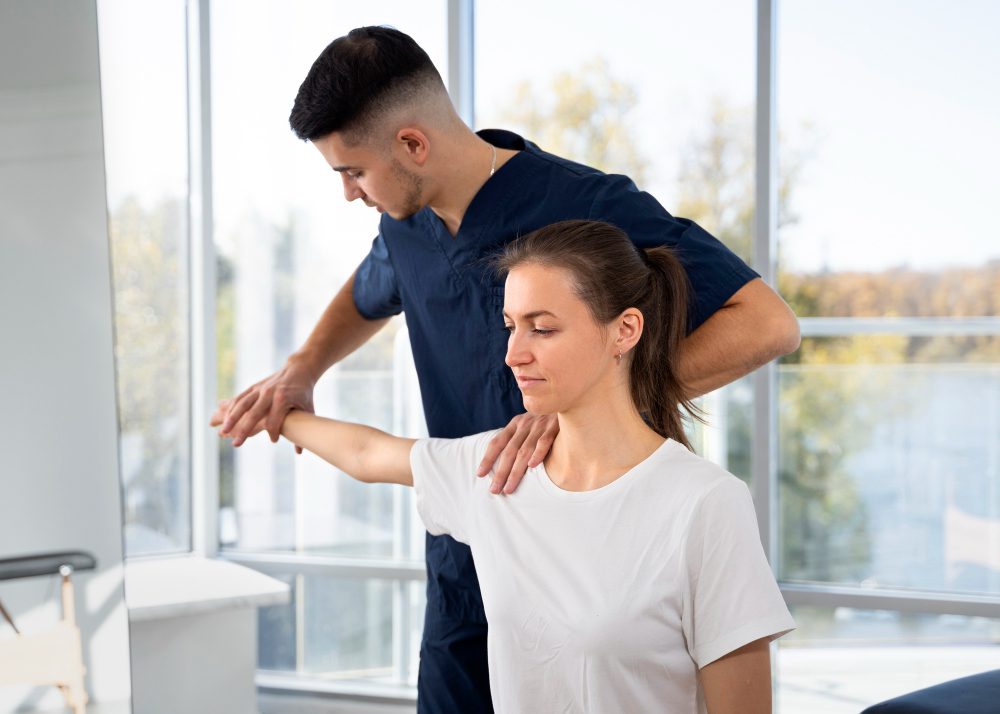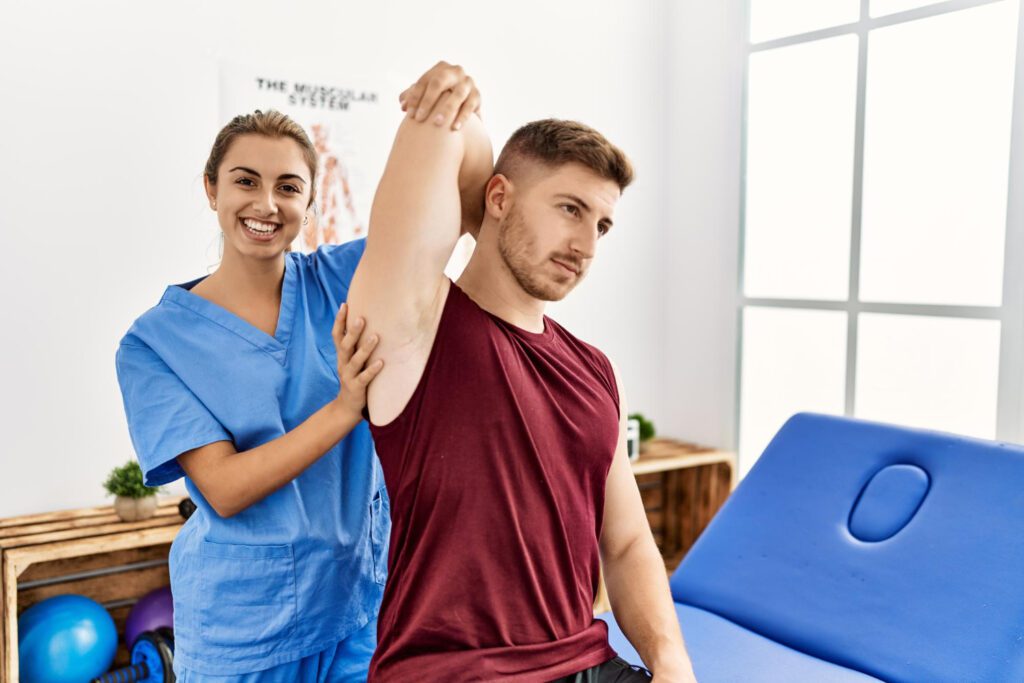Shoulder pain is a common issue that can affect people of all ages. Whether it’s due to an injury, overuse, or an underlying medical condition, shoulder pain can significantly impact daily activities and overall quality of life. Understanding the common causes of shoulder pain and the available treatment options can help you manage the discomfort and prevent further complications.
Common Causes of Shoulder Pain
1. Rotator Cuff Injuries
The rotator cuff is a group of muscles and tendons that surround the shoulder joint, keeping the head of your upper arm bone firmly within the shallow socket of the shoulder.
Causes
Rotator cuff injuries can occur due to repetitive movements, heavy lifting, or trauma. Age-related wear and tear can also lead to rotator cuff tears or tendinitis.
Symptoms
Pain when lifting or lowering the arm, weakness in the shoulder, and a crackling sensation.
2. Frozen Shoulder (Adhesive Capsulitis)
Frozen shoulder is a condition characterized by stiffness and pain in the shoulder joint.
Causes
The exact cause is unknown, but it often occurs after periods of immobilization, such as after surgery or an injury. It is more common in people with diabetes or thyroid disorders.
Symptoms
Gradual onset of pain and stiffness, leading to severe restriction in shoulder movement.
3. Shoulder Impingement
This occurs when the rotator cuff tendons are intermittently trapped and compressed during shoulder movements.
Causes
Repetitive overhead activities, such as throwing or swimming, can lead to shoulder impingement.
Symptoms
Sharp pain when lifting the arm, especially when reaching overhead or behind the back.
4. Bursitis
Bursae are small, fluid-filled sacs that cushion the bones, tendons, and muscles near the joints. Bursitis occurs when these sacs become inflamed.
Causes
Repetitive motions or positions that put pressure on the bursae around a joint can cause bursitis. Shoulder bursitis is common in athletes and people with occupations that require frequent overhead reaching.
Symptoms
Pain and tenderness in the shoulder, particularly when moving the arm.
5. Arthritis
Arthritis involves inflammation of the joints, and the shoulder can be affected by osteoarthritis, rheumatoid arthritis, or post-traumatic arthritis.
Causes
Age-related wear and tear (osteoarthritis), autoimmune diseases (rheumatoid arthritis), or previous injuries (post-traumatic arthritis).
Symptoms
Persistent pain, swelling, and reduced range of motion in the shoulder.
6. Dislocated Shoulder
A dislocated shoulder occurs when the upper arm bone pops out of the cup-shaped socket that is part of the shoulder blade.
Causes
Traumatic injury, such as a fall or a blow to the shoulder.
Symptoms
Severe pain, swelling, and visible deformity.
How to Treat Shoulder Pain
1. Rest and Activity Modification
-
- What to Do: Avoid activities that exacerbate the pain and give your shoulder time to heal.
-
- Why It Helps: Resting can help reduce inflammation and prevent further injury.
2. Ice and Heat Therapy
-
- What to Do: Apply ice packs to the shoulder for 15-20 minutes several times a day to reduce swelling and pain. After a few days, switch to heat therapy to relax and loosen tissues and improve blood flow.
-
- Why It Helps: Ice reduces inflammation and numbs the area, while heat soothes sore muscles and joints.
3. Physical Therapy
-
- What to Do: Engage in exercises and stretches prescribed by a physical therapist to improve strength, flexibility, and range of motion.
-
- Why It Helps: Physical therapy can help restore function and prevent further injury by strengthening the muscles around the shoulder joint.
4. Medications
-
- What to Do: Use over-the-counter pain relievers like ibuprofen or acetaminophen. In some cases, your doctor might prescribe stronger medications or corticosteroid injections.
-
- Why It Helps: Medications can help manage pain and inflammation, making it easier to perform physical therapy and other activities.
5. Surgery
-
- What to Do: In severe cases, such as significant rotator cuff tears, recurrent dislocations, or advanced arthritis, surgery may be necessary.
-
- Why It Helps: Surgery can repair damaged tissues, remove bone spurs, or replace the shoulder joint to restore function and reduce pain.
6. Lifestyle and Home Remedies
-
- What to Do: Maintain good posture, avoid heavy lifting, and perform regular shoulder exercises to keep the joint flexible and strong.
-
- Why It Helps: Preventive measures and self-care can help manage symptoms and prevent future problems.
Conclusion
Shoulder pain can be debilitating, but understanding the common causes and knowing the treatment options can help you manage it effectively. Whether it’s through rest, physical therapy, medications, or, in severe cases, surgery, addressing shoulder pain early can lead to better outcomes and a quicker return to your normal activities. If you’re experiencing persistent shoulder pain, it’s important to consult with an experienced orthopedic surgeon like Dr. Morteza Farr to get a proper diagnosis and tailored treatment plan. Don’t let shoulder pain hold you back—seek expert care and start your journey to recovery today.











